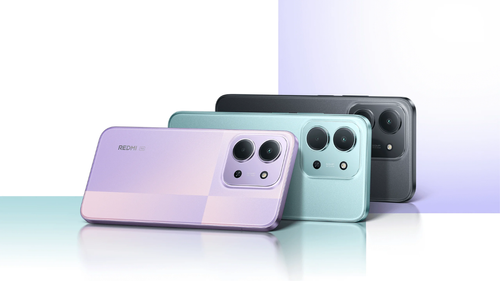Ad
Articles
How to Choose the Right Refrigerator Capacity in India: A Comprehensive Buying Guide

As a technology journalist covering home appliances for over a decade, I've seen how refrigerators have evolved from basic cooling boxes to smart, energy-efficient machines that fit modern Indian lifestyles. In a country like India, where families range from nuclear units in bustling cities to large joint households in smaller towns, picking the right fridge isn't just about keeping food fresh—it's about matching your daily needs, saving on electricity bills, and making the most of your kitchen space. With rising temperatures, frequent power cuts in some areas, and a growing focus on sustainability, choosing the correct refrigerator capacity can make a big difference in your home.
This guide is tailored for Indian buyers. We'll dive into what refrigerator capacity really means, key factors to consider, a step-by-step capacity selection based on family size, popular types available in the market, top brands, and even some specific model suggestions. By the end, you'll have all the tools to make an informed decision. Whether you're a first-time buyer in Mumbai or upgrading in a rural Kerala home, this article will help you avoid common mistakes like buying too small a fridge that overflows during Diwali or too large one that wastes energy.
Why focus on capacity? In India, where home cooking is a staple and festivals mean stocking up on sweets, veggies, and leftovers, the wrong size can lead to frustration. According to recent market reports, over 60% of Indian households now prefer fridges above 250 liters, up from a decade ago, thanks to changing eating habits and urban living. But bigger isn't always better—it's about balance. Let's break it down simply.
Understanding Refrigerator Capacity: The Basics

Refrigerator capacity is measured in liters (L) and refers to the total storage space inside. But not all liters are the same. You'll often see two terms: gross capacity and net capacity. Gross is the total volume, including shelves and insulation, while net is the usable space after subtracting those. In India, brands like LG and Samsung usually highlight gross capacity in ads, but check the net for real usability—aim for net to be at least 85-90% of gross to ensure good insulation.
For example, a 300L gross fridge might have 270L net space. This matters because Indian families store a mix of items: fresh produce from local markets, milk packets, large pots of curry, and even medicines. Capacity includes both the main fridge compartment for everyday items and the freezer for frozen foods.
In the Indian context, capacities start from compact 50-100L models for singles or small apartments, going up to massive 500L+ for big families. Remember, higher capacity often means higher power use, so pair it with a good Bureau of Energy Efficiency (BEE) star rating—3 stars or above is ideal for most homes to keep bills low amid rising electricity costs.
Types of capacities also vary by design. Single-door fridges are usually under 250L, perfect for budget buyers. Double-door ones range from 250-400L, with separate freezer access. Side-by-side or French-door models go beyond 400L, offering luxury features like water dispensers. We'll explore these later.
Key Factors to Consider When Choosing Refrigerator Capacity

Choosing the right capacity isn't a one-size-fits-all task. Here are the main things to think about, keeping Indian homes in mind.
1. Family Size and Household Needs
This is the starting point. For a single person or couple in a city like Delhi, a 150-250L fridge suffices for daily groceries, a few ready-to-eat meals, and occasional leftovers. But in a joint family of 6-8 in Uttar Pradesh, you'll need 400L+ to handle bulk veggies, dairy, and festival preps like storing gulab jamuns or paneer.
Consider eating habits too. Vegetarian families might need more veggie drawers, while non-veg ones require better freezer space for meat. In India, where many shop weekly at sabzi mandis, extra crisper compartments help keep produce fresh longer.
2. Kitchen Space and Layout
Indian kitchens vary—from compact urban flats to spacious rural homes. Measure your available space: height, width, depth, and door swing room. A side-by-side fridge might be wide (over 90cm), unsuitable for narrow kitchens in apartments. Also, ensure 5-10cm clearance on all sides for ventilation to prevent overheating, especially in hot summers.
In humid areas like Kolkata, opt for models with moisture control to avoid quick spoilage.
3. Budget and Running Costs
Entry-level 200L fridges start at ₹15,000, while premium 500L ones can hit ₹1 lakh. Factor in long-term costs: a 5-star rated fridge saves 20-30% on electricity compared to 2-star, crucial with India's average ₹6-8 per unit rates. Inverter compressors, common in mid-range models, adjust cooling to save power during outages.
4. Energy Efficiency and Features
Look for BEE labels—higher stars mean better efficiency. In power-cut prone areas like Bihar, stabilize with voltage regulators. Features like frost-free (no manual defrosting), convertible freezers (switch to fridge mode), and smart connectivity (app control) add value but increase price. For eco-conscious buyers, refrigerant types like R600a are greener.
5. Lifestyle and Usage Patterns
Busy professionals might want quick-chill zones for beverages. Families with kids need child locks and easy-access shelves. During monsoons, anti-bacterial coatings prevent mold. If you host often, extra bottle racks help.
Weigh these against capacity. Overbuying wastes energy; underbuying leads to clutter. A rule of thumb: add 50L per extra family member beyond basics.
Refrigerator Capacity Guide Based on Family Size in India

Let's make it practical. Here's a tailored guide for Indian families, considering our love for home-cooked meals, seasonal fruits, and bulk storage.
For Small Families (1-2 Members): 150-250 Liters
Ideal for bachelors, couples, or empty-nesters in metros like Bangalore. This size holds a week's groceries: 5-10L for milk/yogurt, space for fruits/veggies, and a small freezer for ice cream or frozen veggies.
Pros: Compact, affordable (₹10,000-25,000), low energy use (100-200 units/year).
Cons: Limited for entertaining or bulk buying.
In India, these are mostly single-door, direct-cool models. Perfect for PGs or small flats where space is premium.
For Medium Families (3-4 Members): 250-350 Liters
The sweet spot for most nuclear families in cities like Chennai or Pune. Fits daily cooking needs: large veggie trays for onions/tomatoes, shelves for curries, and a bigger freezer for chicken or ice.
Pros: Balanced space, frost-free options, good for weekly shopping at Big Bazaar or Reliance.
Cons: Might feel tight during festivals like Holi when sweets pile up.
Double-door designs dominate here, with features like adjustable shelves for tall bottles of masala chai mix.
For Large Families (5+ Members): 350-500 Liters and Above
Suited for joint families in places like Gujarat or Punjab, where meals are communal and storage includes grains, pickles, and party leftovers.
Pros: Ample compartments, often with door-in-door for quick access, water dispensers.
Cons: Higher cost (₹40,000+), more power (300+ units/year), needs bigger kitchens.
Side-by-side or French-door models shine, with zones for different foods—great for diverse Indian diets.
Extra Tip: For extended families or those in rural areas with irregular power, add 50-100L buffer for emergencies.
Types of Refrigerators and Their Typical Capacities
Understanding types helps match capacity to needs.
Single-Door Refrigerators (150-250L)
Basic, one-door units with internal freezer. Best for small budgets and spaces. In India, popular for their low maintenance. Example: Great for storing daily essentials without fancy features.
Double-Door Refrigerators (250-400L)
Top freezer, bottom fridge. Frost-free, energy-efficient. Dominant in Indian markets for medium families. Separate doors reduce cold air loss.
Side-by-Side Refrigerators (400-600L+)
Two vertical doors: one fridge, one freezer. Luxury pick with ice makers, ideal for large homes. Growing in popularity in urban India.
French-Door Refrigerators (400-500L+)
Bottom freezer with two top doors. Spacious, ergonomic—easy to reach items without bending. Premium, but worth it for back-pain prone users.
Mini or Bar Fridges (50-100L)
For offices or bedrooms, not main kitchens.
In India, double-door leads sales due to value for money.
Top Refrigerator Brands in India for 2025
India's market is competitive. Here's a quick overview:
-
LG: Known for innovative features like door cooling, inverter tech. Strong after-sales in most cities.
-
Samsung: Stylish designs, digital inverters for quiet operation. Good for smart homes.
-
Whirlpool: Reliable, affordable, with Intellisense tech for adaptive cooling.
-
Godrej: Indian brand, budget-friendly, focuses on energy savings.
-
Haier: Value picks with modern looks, growing fast.
-
Bosch: Premium German quality, durable for long-term use.
Choose based on service availability—check for centers in your pin code.
Example Suggestions: Top Refrigerator Models for Different Capacities
Based on 2025 trends, here are a few picks. Prices fluctuate; check sites like Amazon or Flipkart.
For Small Families: Samsung 215L 5-Star Single-Door Refrigerator (RR23D2H359U/HL)
Around ₹18,000. Why? Digital inverter for stable cooling during voltage fluctuations, common in India. Base cooling keeps veggies fresh longer. Ideal for couples—compact yet spacious enough for weekly needs.
For Medium Families: Whirlpool 270L (Gross 300L) Frost-Free Triple-Door Refrigerator (FP 313D PROTTON ROY)
About ₹28,000. Features adaptive intelligence for even cooling, perfect for humid Indian climates. Three doors mean better organization—no mixing odors between fruits and meats. Suits 3-4 members with its efficient space.
For Large Families: Samsung 653L Side-by-Side Refrigerator (RS76CG8003S9HL)
Priced at ₹80,000+. SpaceMax tech maximizes interior without bulking exterior. Convertible freezer, Wi-Fi connectivity for remote monitoring—handy for busy Indian households. Great for 5+ members with its massive storage.
These are examples; compare reviews on sites like MouthShut or YouTube for real-user feedback.
Practical Tips for Buying a Refrigerator in India
-
Where to Buy: Online (Amazon, Flipkart) for deals, offline (Croma, Reliance Digital) for hands-on checks. Festive sales like Amazon Great Indian Festival offer 20-30% off.
-
Warranty and Service: Minimum 1-year comprehensive, 10-year on compressor. Brands like LG offer extended options.
-
Test Before Buying: Open doors, check noise, feel build quality.
-
Eco-Friendly Choices: Opt for CFC-free models.
-
Avoid Pitfalls: Don't ignore dimensions; measure twice. Read fine print on energy claims.
Budget extra for stabilizers if in unstable power areas.
Conclusion: Make the Smart Choice for Your Home
Choosing the right refrigerator capacity in India boils down to understanding your family's needs, space, and budget. Start with family size—150-250L for small, 250-350L for medium, 350L+ for large—then factor in features and brands. With options like the Samsung 215L for starters or Whirlpool 270L for growing families, there's something for everyone.
Invest wisely: a good fridge lasts 10-15 years, saving time and money. If you're ready to shop, head to trusted retailers and use this guide as your checklist. Stay cool, India!
Follow Us:
Ad
Recent News

Realme Narzo 90 Series Teased for India Launch: What We Know About the Upcoming Smartphones
05-Dec-2025 09:49 AM

Motorola Edge 70 Swarovski Edition Launch: Features, Specs, Price, and Availability
05-Dec-2025 06:40 AM

Realme Watch 5 Launches in India: AMOLED Display, Long Battery
04-Dec-2025 11:32 AM

Realme P4x 5G Launches in India Today: Price, Features, and Full Specs Revealed
04-Dec-2025 04:14 AM

Redmi 15C 5G Launches in India Today: Affordable 5G with Big Battery and Smooth Display
03-Dec-2025 05:41 AM
Reviews & Guides
View All

Realme P4x 5G Review: Budget-Friendly Beast with Epic Battery Life

Sony BRAVIA 7 Mini LED K-65XR70 vs. Haier Mini LED H65M95EUX

Samsung QN90F (65QN90FAU) Review: The King of Bright-Room Viewing

LG QNED92: The QNED Powerhouse That's More Than a Bright Alternative

Why doesn’t Apple reveal the iPhone battery in advertisements?

Donald Trump Watch Collection: Timeless Luxury on the Wrist

Best 5 Litre Water Heaters in India 2025: Top Latest Models for Quick Hot Water

Top 10 camera lenses you should Own in 2025
Ad
Latest Mobiles In India
Ad
Ad












